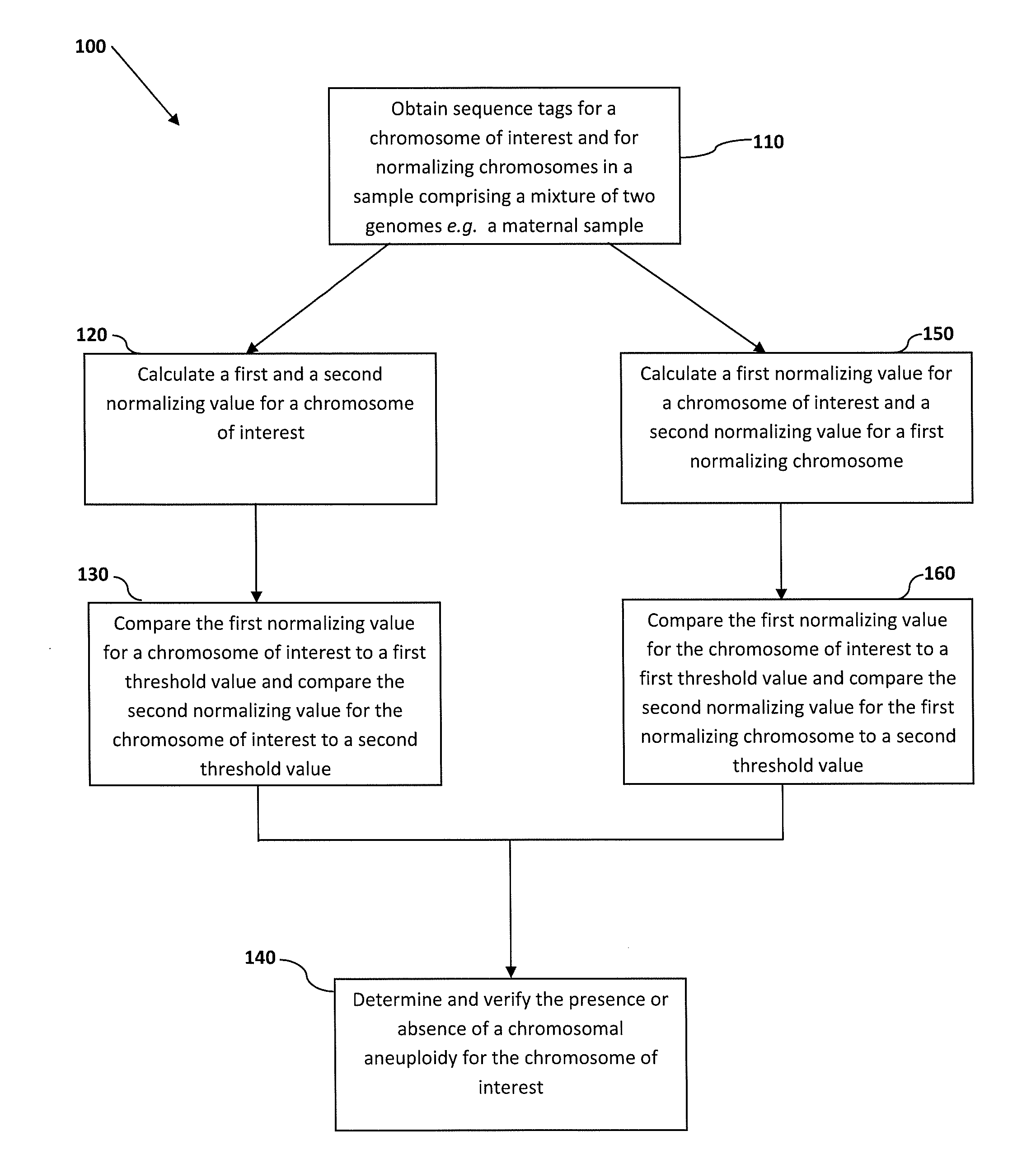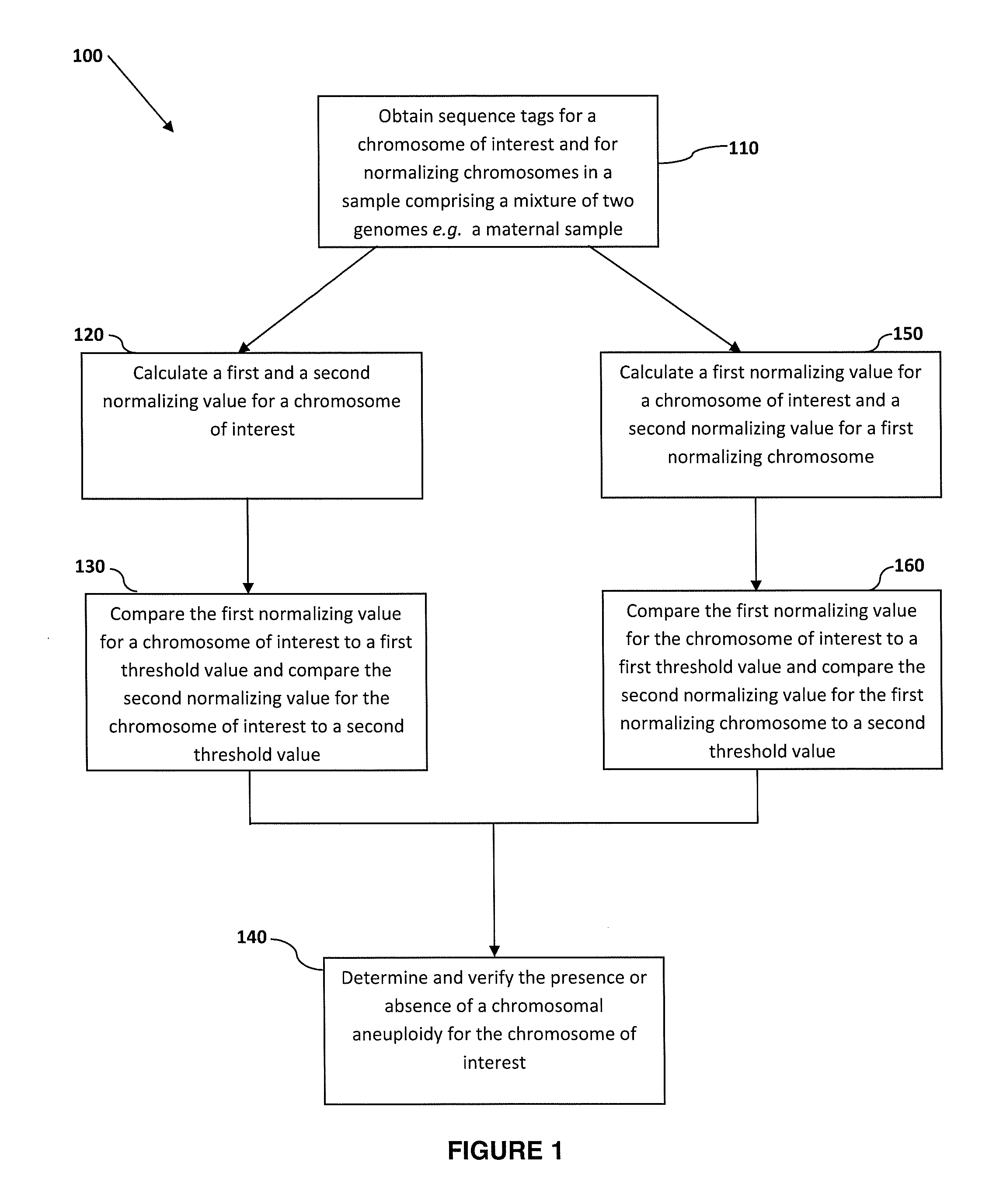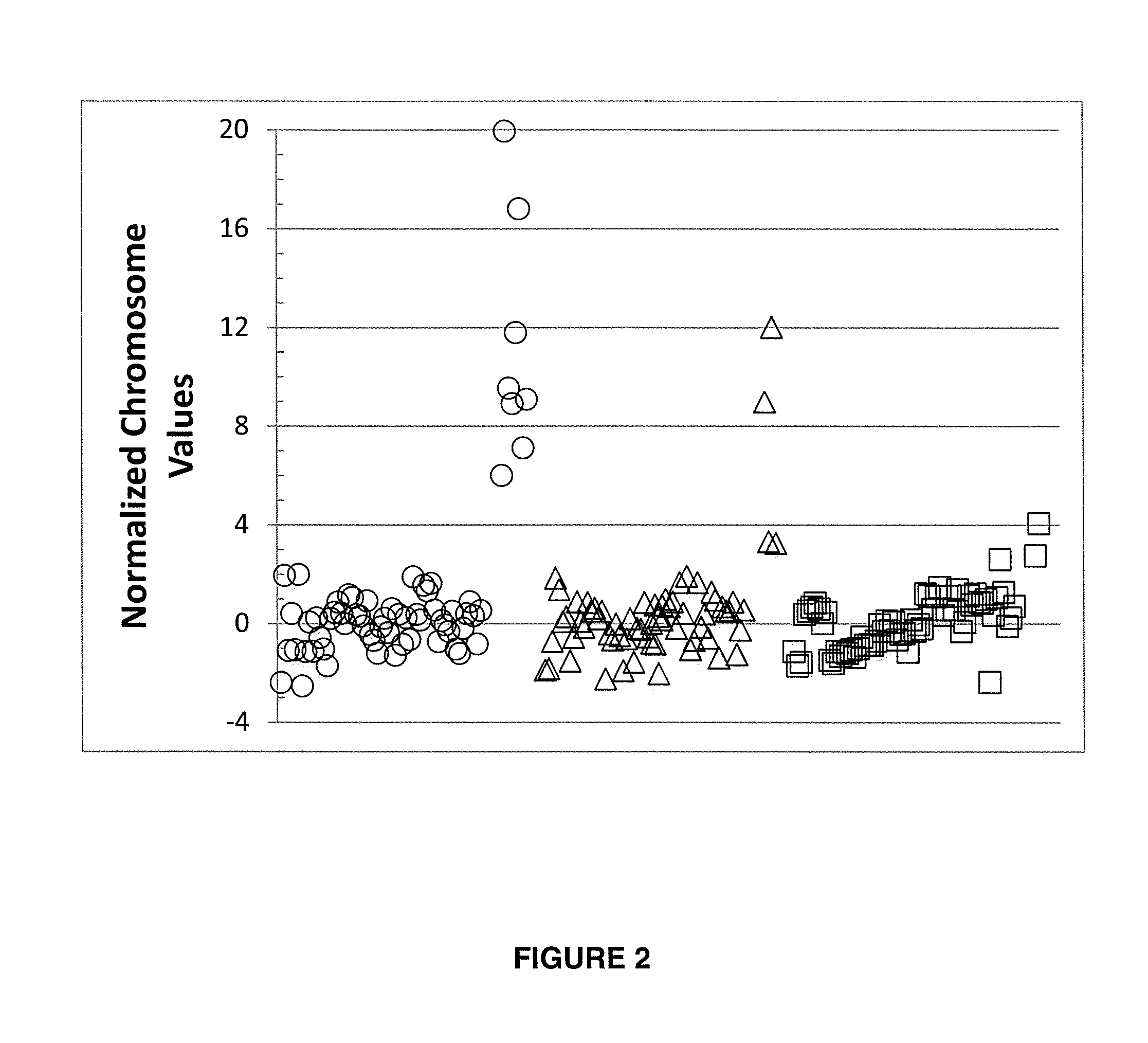Normalizing chromosomes for the determination and verification of common and rare chromosomal aneuploidies
a chromosome and normalization technology, applied in the field of normalizing chromosomes for the determination and verification of common and rare chromosomal aneuploidies, can solve the problems of high false positive rate, non-optimal determination, and failure to provide risk determination,
- Summary
- Abstract
- Description
- Claims
- Application Information
AI Technical Summary
Benefits of technology
Problems solved by technology
Method used
Image
Examples
example 1
Optimal Determination of Fetal Chromosomal Abnormalities Using Massively Parallel DNA Sequencing of Cell Free Fetal DNA from Maternal Blood: Test Set 1 Independent of Training Set 1
[0173]The study was conducted by qualified site clinical research personnel at 13 US clinic locations between April 2009 and July 2010 under a human subject protocol approved by institutional review boards (IRBs) at each institution. Informed written consent was obtained from each subject prior to study participation. The protocol was designed to provide blood samples and clinical data to support development of noninvasive prenatal genetic diagnostic methods. Pregnant women, age 18 years or older were eligible for inclusion. For patients undergoing clinically indicated CVS or amniocentesis blood was collected prior to performance of the procedure, and results of fetal karyotype was also collected. Peripheral blood samples (two tubes or ˜20 mL total) were drawn from all subjects in acid citrate dextrose (A...
example 2
Use of Multiple Chromosome Ratios to Verify Determination of Aneuploidy: Normalizing Normalizing Chromosomes
[0208]As described in the previous Example, the present method is based on the normalization of the number sequence tags mapped to a chromosome of interest to the number of sequence tags mapped to a chromosome that displays similar variability across samples and across sequencing runs to the chromosome of interest. To verify the classification of an aneuploidy and exclude that the normalizing chromosome used in the analysis is itself an aneuploid chromosome i.e. present in aberrant copy number, normalization of the first normalizing chromosome i.e. the chromosome used for determining a chromosome dose for classifying the common aneuploidies involving chromosomes 21, 18 and X, was determined as follows.
[0209]Using the qualifying samples from the training set 1, and the qualifying samples from test set 1 as described in Example 1, sequencing information was analyzed to identify ...
example 3
Determination and Verification of a Chromosomal Aneuploidy Using at Least Two Normalizing Chromosomes for a Chromosome of Interest
[0223]To demonstrate that the determination of a chromosomal aneuploidy can be verified by using a first and a second normalizing chromosome for a chromosome of interest, the chromosome doses for chromosome 21 in Example 1A that were computed using chromosome 9 as the first normalizing chromosome, were calculated using chromosome 10 and chromosome 14 as the second and third normalizing chromosome for chromosome of interest 21.
[0224]FIG. 8A shows a plot of NCVs for the 48 samples in test set 1 calculated using the mean and S.D. of the corresponding chromosome doses in the qualified samples of training set 1. The mean % CV of chromosome doses for chromosome 21 in training set 1 are provided in Table 7.
TABLE 7Determination of Second Normalizing Chromosomes for Chromosome ofInterest Chromosome 21Training Set 1Test Set 1% CV% CVChrY81.98064ChrY82.78696Chr228.0...
PUM
| Property | Measurement | Unit |
|---|---|---|
| diameter | aaaaa | aaaaa |
| birth weight | aaaaa | aaaaa |
| volume | aaaaa | aaaaa |
Abstract
Description
Claims
Application Information
 Login to View More
Login to View More - R&D
- Intellectual Property
- Life Sciences
- Materials
- Tech Scout
- Unparalleled Data Quality
- Higher Quality Content
- 60% Fewer Hallucinations
Browse by: Latest US Patents, China's latest patents, Technical Efficacy Thesaurus, Application Domain, Technology Topic, Popular Technical Reports.
© 2025 PatSnap. All rights reserved.Legal|Privacy policy|Modern Slavery Act Transparency Statement|Sitemap|About US| Contact US: help@patsnap.com



